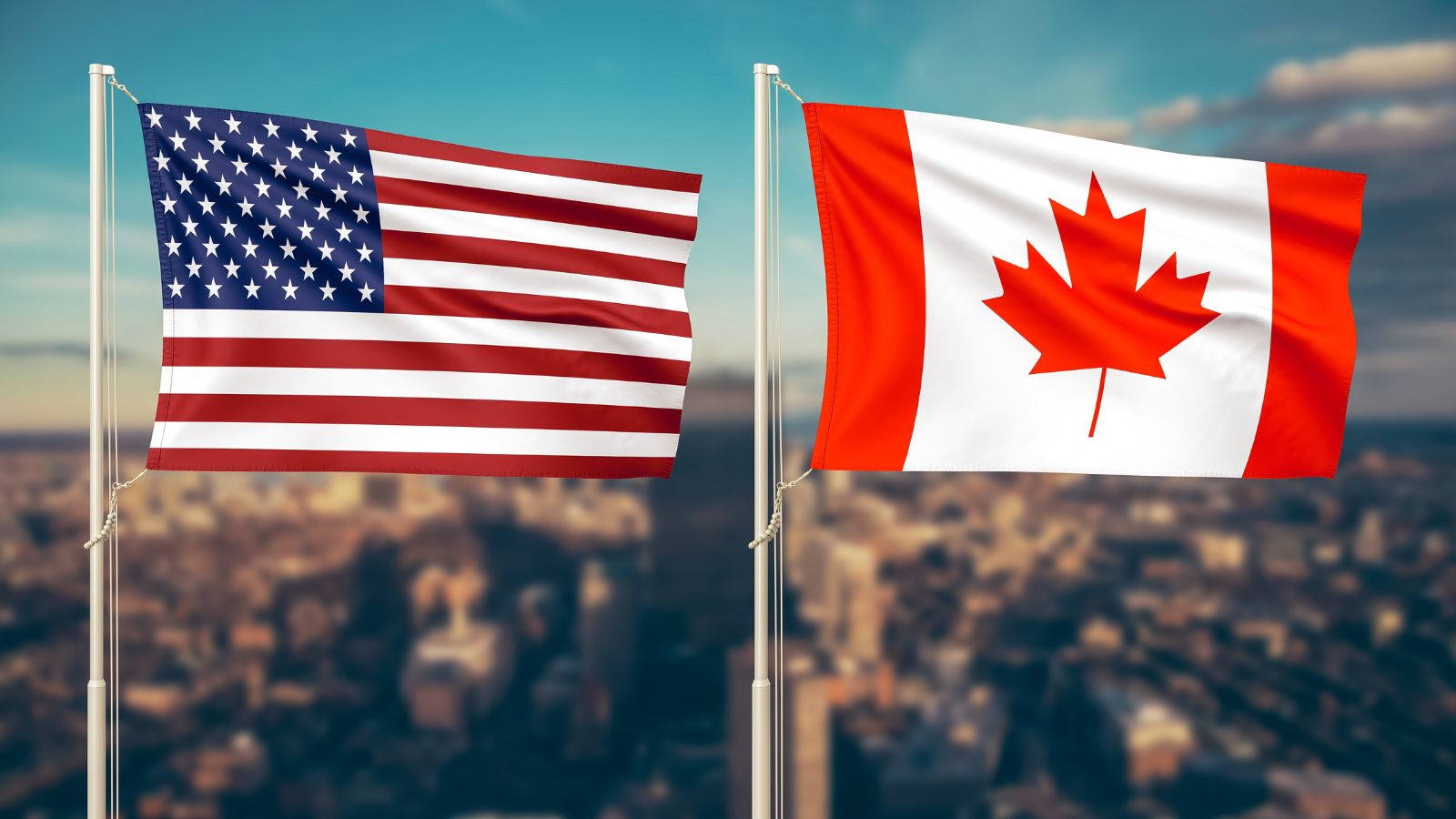The U.S. and Canada share one of the most deeply connected automotive industries in the world. For decades, vehicles and parts have crossed the border multiple times during production, making both countries dependent on each other’s markets. When the U.S. imposes tariffs, the ripple effects reach Canada almost instantly. Prices climb, supply chains tighten, and consumer habits shift. The longer tariffs remain in place, the more they shape how Canadians buy, sell, and build vehicles. Expanded here with more detail, real world examples, and industry context are twenty ways tariffs are reshaping the Canadian auto market.
Higher Vehicle Prices

The most immediate and visible effect of U.S. tariffs is the increase in sticker prices at dealerships. Canadian buyers are already grappling with inflation and higher borrowing costs, and tariffs add another layer. Vehicles that once crossed the border with little disruption are now saddled with added fees that manufacturers pass along to consumers. For families already stretching budgets, the jump of several thousand dollars on a new SUV or truck can push them toward used models or delay a purchase altogether.
Increased Parts Costs

Repair shops and dealerships across Canada are feeling the pinch of higher parts costs. Many essential components such as transmissions, axles, and even electronics are sourced from U.S. suppliers or pass through American distribution centers. Tariffs drive up those costs, and the extra burden trickles down to Canadian car owners. Even routine repairs like replacing bumpers or sensors can cost far more today than before tariffs, especially as vehicles become loaded with technology that is both delicate and expensive.
Slower New Vehicle Sales

The combined effect of higher sticker prices and inflated repair bills is clear: new vehicle sales in Canada have slowed. Buyers who once traded in every four or five years are now holding onto vehicles for longer. Dealerships report that traffic in showrooms has softened, especially in mid level trims where price sensitivity is highest. Tariffs do not fully explain the slowdown, but they contribute heavily to the affordability crisis in the Canadian car market.
Pressure on Used Car Markets

With fewer Canadians buying new vehicles, the used market has tightened. Prices for pre owned cars have risen dramatically over the past few years, and tariffs only intensify that pressure. Budget conscious drivers who once relied on affordable second hand imports from the U.S. now face tariffs on those vehicles as well. This means fewer bargains for Canadian buyers and a used market where vehicles hold value longer than expected.
Strain on Canadian Assembly Plants

Factories in Ontario, including those operated by GM, Ford, and Stellantis, rely on cross border supply chains. Engines might come from Michigan, transmissions from Ohio, and electronics from U.S. suppliers before final assembly in Canada. Tariffs add costs at every step, eroding the competitiveness of Canadian plants. Automakers may shift more work to plants in the U.S. or Mexico to balance costs, leaving Canadian workers vulnerable to reduced shifts or outright plant closures.
Shifts in Production Locations

Tariffs are forcing companies to rethink where and how they build vehicles. Some automakers are considering investing more in Canadian or Mexican facilities to bypass U.S. imposed tariffs on key parts. This could mean a gradual rebalancing of North American manufacturing footprints. While it may benefit Canadian plants in some cases, it also introduces uncertainty for workers and suppliers who depend on stable production schedules.
Increased Consumer Leasing

Faced with higher new vehicle prices, many Canadians are turning to leasing instead of financing. Leasing allows lower monthly payments even though the total cost remains higher. Dealerships note that leasing has become a more common option for buyers who want access to new vehicles but cannot justify the larger outlays that tariffs have helped create. This shift also changes the flow of used cars back into the market as leases end, subtly reshaping inventory cycles.
Tougher Times for Small Dealerships

Independent dealerships with thin margins are struggling the most. Tariffs cut into profit margins by increasing wholesale costs, yet many smaller businesses cannot raise prices enough to cover losses without scaring away buyers. This squeeze has already forced some dealerships to scale back inventory, reduce staff, or in extreme cases, close their doors. In rural areas, where dealerships are central to local economies, the impact is especially noticeable.
Growth of Asian Brands

Tariffs disproportionately affect brands deeply tied to U.S. supply chains. This has opened the door for Japanese and Korean automakers such as Toyota, Honda, Hyundai, and Kia to expand their presence in Canada. Many of these manufacturers produce vehicles in plants located outside the U.S. or rely less on American sourced parts, allowing them to price models more competitively. Canadian buyers are responding, shifting market share away from Detroit’s Big Three and toward Asian automakers.
Decline in U.S. Brand Sales

For decades, Ford, GM, and Chrysler dominated Canadian driveways. Tariffs are weakening that hold. Popular U.S. models like the Ford F 150 or Chevrolet Silverado face steeper increases because they are built in U.S. factories and rely heavily on U.S. sourced components. Buyers who might once have chosen American trucks are increasingly considering alternatives from Toyota, Nissan, or even emerging EV brands that are less tied to U.S. production.
Rising Vehicle Theft Risks

As tariffs push up prices and reduce availability, the black market for vehicles and parts grows stronger. Stolen vehicles become more valuable, and organized crime networks are eager to fill demand with stolen SUVs and trucks that are either sold overseas or stripped for parts. Canadian insurers are already reporting higher claim payouts for theft, linking part of the trend to escalating vehicle costs caused by tariffs and supply chain pressures.
Reduced Consumer Choice

Automakers faced with tighter margins sometimes pull less profitable models from the Canadian market altogether. In other cases, they quietly reduce the number of trim levels or special options offered to Canadians. This means buyers may have fewer choices when shopping for vehicles. For example, niche trims of popular SUVs or performance models may be deemed unviable to import once tariffs are applied, narrowing what shows up on Canadian dealer lots.
Growing Popularity of Electric Vehicles

Tariffs on traditional gasoline powered cars have indirectly boosted interest in electric vehicles. Many EVs are built outside of the U.S. or rely on supply chains less exposed to American tariffs. This makes them relatively more attractive in Canadian showrooms. Cities like Vancouver, Toronto, and Montreal are seeing growing demand for EVs as buyers seek alternatives that are less affected by the cross border tariff battles.
Increased Pressure on Canadian Suppliers

Canadian parts suppliers are feeling squeezed as tariffs disrupt established cross border business. Companies that once exported key components to U.S. plants now face steeper costs that make them less competitive. Some have had to scale back contracts or find new buyers outside North America. This shift is painful in the short term, but it could eventually push Canadian suppliers to diversify and expand into new markets, particularly in Europe and Asia.
Delays in Delivery Times

Tariffs bring not only higher costs but also more bureaucracy at the border. Trucks carrying vehicles or parts often face longer inspection lines and added paperwork. Canadian buyers waiting for factory ordered vehicles may experience frustrating delays, while dealerships complain of limited inventory that takes longer to replenish. For repair shops, longer wait times for replacement parts extend downtime for customers’ cars, souring consumer confidence.
Boost for Domestic Research and Development

Canadian policymakers and companies see tariffs as a reason to invest more in homegrown innovation. Efforts are underway to strengthen domestic supply chains, particularly in EV battery production, green manufacturing, and advanced automotive technology. By building more of this expertise at home, Canada hopes to reduce its reliance on the U.S. for critical parts and ideas. In the long run, this could make the Canadian auto industry more resilient.
Impact on Auto Jobs

The tariff battle has a direct effect on Canadian jobs. Assembly plants face uncertain futures if supply chain costs remain high, and suppliers risk losing contracts to cheaper overseas competitors. While some jobs could be created if production shifts to Canada, many others are at risk in the short term. The unpredictability of U.S. trade policies makes it difficult for Canadian workers and unions to plan for the future.
Political Tensions Affecting Confidence

Every new round of U.S. tariffs sparks political debates and uncertainty. That uncertainty affects both consumer behavior and corporate strategy. Buyers often delay major purchases if they are unsure whether tariffs will increase prices further, while automakers hesitate to commit to long term Canadian investments if the trade environment feels unstable.
More Cross Border Used Vehicle Imports

Some Canadians look south of the border for used vehicles to escape the high cost of new models. Tariffs complicate this, as even used imports can face added fees. What was once a simple way to find affordable pre owned cars has become an expensive and bureaucratic process. The result is fewer imports, higher used car prices in Canada, and frustrated buyers searching for alternatives.
Long Term Market Realignment

The biggest impact of U.S. tariffs on Canada may be long term realignment. Automakers are diversifying their supply chains, consumers are shifting toward different brands, and policymakers are pushing for more domestic production. Tariffs, though disruptive, are forcing the Canadian auto industry to rethink how it operates. Over time, this could mean greater reliance on non U.S. sources, stronger local manufacturing, and a Canadian auto market that looks very different from the one that existed before tariffs were introduced.
25 Facts About Car Loans That Most Drivers Don’t Realize

Car loans are one of the most common ways people fund car purchases. Like any other kind of loan, car loans can have certain features that can be regarded as an advantage or a disadvantage to the borrower. Understanding all essential facts about car loans and how they work to ensure that you get the best deal for your financial situation is essential. Here are 25 shocking facts about car loans that most drivers don’t realize:
25 Facts About Car Loans That Most Drivers Don’t Realize
